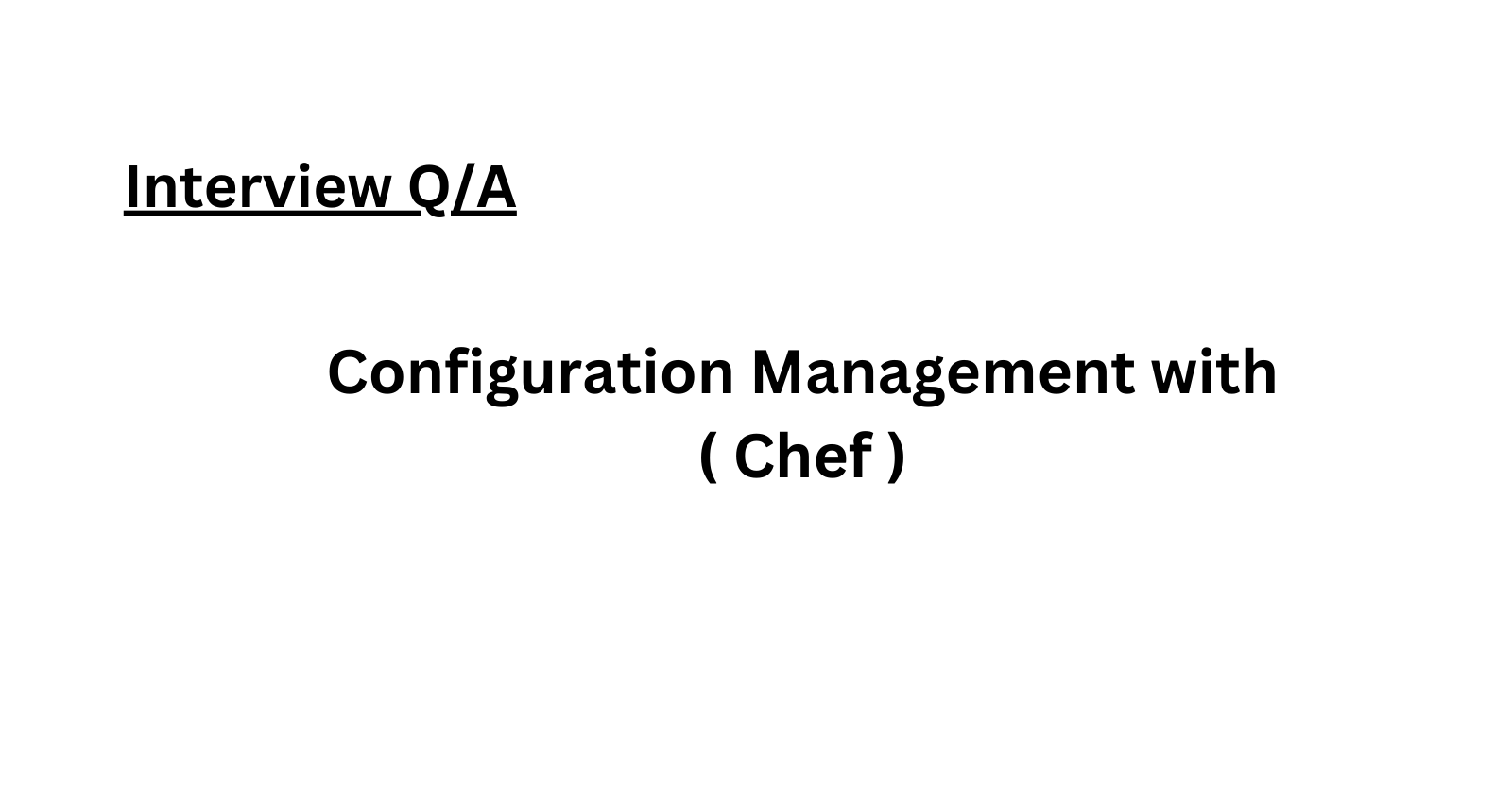Understanding Chef in Configuration Management
 Amrutha D
Amrutha D
1: What is the role of the Chef in DevOps?
Chef serves as a vital configuration management tool within DevOps environments, enabling the automation of infrastructure and application deployment and management processes. Its primary function is to define infrastructure as code, aligning it with the desired state outlined by developers and operations teams.
2: How does Chef operate within an infrastructure?
Chef operates through a client-server architecture. The Chef client, present on nodes within the infrastructure, communicates with the Chef server. This server acts as a central repository for infrastructure code and configurations. The Chef client regularly checks for updates or new configurations from the server and implements these changes on the node.
3: What components constitute the architecture of a Chef?
The Chef's architecture consists of crucial elements:
Chef Workstation: Here, users create, test, and manage Chef cookbooks, recipes, and configurations using tools like the Chef development kit.
Chef Server: Central hub storing configurations, cookbooks, node data, and other necessary information.
Chef Clients: Nodes in the infrastructure configured by the Chef Server to maintain their desired states.
Cookbooks and Recipes: Collections of instructions and steps defining specific components and configurations.
Chef Solo: A standalone version for testing and development purposes, operating without a Chef Server.
Chef Analytics: An optional add-on providing real-time insights and data on the Chef-managed infrastructure's state.
4: Can you explain Chef's functioning and language used for configuration?
Chef uses a Domain Specific Language (DSL) called the Chef Infra language. This language defines resources, which represent individual configurations within the system. Cookbooks, containing recipes, group these resources together. Recipes specify configurations for a component using resources. For instance, a recipe might detail how to install a package or configure a service.
5: Could you provide an example of a Chef recipe?
Certainly. Here's an example of a Chef recipe for installing the Nginx web server:
package 'nginx' do
action :install
end
service 'nginx' do
action [:enable, :start]
end
This code utilizes Chef to install the Nginx package and subsequently start its service.
6: What benefits does Chef offer for infrastructure management? A: Chef simplifies the creation of complex configurations in a clear, declarative manner. It facilitates testing, and versioning of infrastructure code, and allows for easy rollback of changes in case of issues.
In conclusion:
Chef stands as a potent tool for managing infrastructure configurations and automating application deployments, allowing users to define and maintain their desired infrastructure states effectively.
Subscribe to my newsletter
Read articles from Amrutha D directly inside your inbox. Subscribe to the newsletter, and don't miss out.
Written by

Amrutha D
Amrutha D
Gen AI Video Creator | Gen AIOps | AIOps Cloud DevOps Engineer | Let's Connect & share Technical knowledge & grow together in Technologies Everyday..